
Sweet and Sour Spareribs
March 7, 2020 Print
This famous, authentic Chinese dish, known as 糖醋小排, is literally translated into sugary and vinegary small ribs. But that would make very little sense in English, thus “sweet and sour spareribs” becomes the closest rendition. But do not confuse this dish with sweet and sour pork (甜酸肉或古老肉), which is another Chinese dish with a similar English name that I will share in a few weeks. The latter is the one that you are probably most familiar with due to its popularity in American Chinese restaurants.
The key to this dish, sweet and sour spareribs, lies with the balance of the various condiments and of course the main ingredient, spare or baby back ribs.
I normally use the horizontally cut pork spareribs or baby back ribs, which are basically spare or baby back ribs cut across the bone. You end up with a long strip of ribs that is around 1.5 inches wide. I’ve seen this type of sparerib cut in most Asian grocery stores. Nonetheless, I was really happy to see Costco and H-E-B carrying the cut as well. At Costco, it’s called “St. Louis Pork Spare Rib Portions” and at H-E-B, it’s called “Pork Cross Cut Spare Ribs” and “Pork Cross Cut Baby Back Ribs.” This type of cut makes the ribs both easy to handle and easy to eat. The meat between the bones is quite special. It’s full of connective tissues which makes it soft and tender. The extra fat helps the ribs absorb more flavors and also makes the meat more succulent.
The ratio between sugar and vinegar generally determines the resulting flavor. I like to use 1 to 1 weight ratio but I definitely have seen other versions of this dish using slightly different ratios. In general, it is quite safe with the 1 to 1 weight ratio. If you don’t have rock sugar and Chinese black vinegar handy, use the substitutes mentioned in the ingredient section. They can produce quite good results as well.
The sweet and sour spareribs originated from one of the Southern provinces in China. And it has spread to other parts of China and thus each region differs somewhat in terms of flavors and cooking techniques. Some require marinating the ribs first, while some require frying the ribs.
In my recipe, I first blanch the rib pieces, then cook them in rock sugar caramel. Finally, I slowly braise them in a flavor infused sauce. The resulting sparerib pieces have a deep burgundy color with a shiny glisten. The meat is so soft that it easily slides off the bones. When biting into the meat, your tongue will first fill with juice that is sweet, nutty, and slightly tart, while your teeth sink into the aroma infused heavenly rib meat.
Active Time: 20 minutes
Total Time: 1.5 hours
Serving: 4-6 people family style
Ingredients:
- 1.5 pounds horizontally cut spareribs or baby back ribs1
- 2 tablespoons vegetable oil
- 60 g rock sugar (can be substituted with 3 tablespoons white sugar)2
- 60 g Chinese vinegar (can be substituted with 4 tablespoons balsamic vinegar)2
- Some hot water (about 1-2 cups depending on your pot)
- 1 teaspoon dark soy sauce3 (can be substituted with ¼ teaspoon light soy sauce and ½ teaspoon molasses)
- 1 tablespoon Chinese Shaoxing Cooking wine (can be substituted with 1 tablespoon dry white wine, saki, or rice wine)
- 1 teaspoon salt
- 1 tablespoon roasted white sesame seeds


Preparation:
- Cut the spareribs or baby back ribs into individual pieces (since the ribs are in a long string, there are clear parts where the bones are; make sure to cut the ribs along the meat part). Rinse the rib pieces in cold water a few times to remove visible blood.

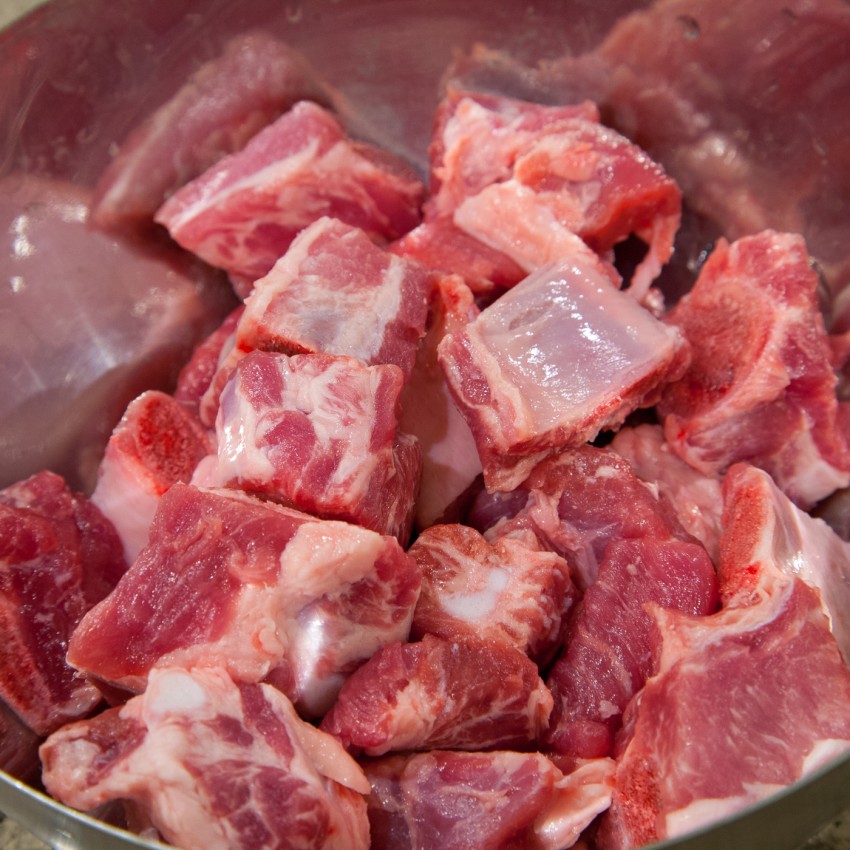
- Measure the right amount of rock sugar (60g) and vinegar (60g) separately (alternatively, use substitutes mentioned above).2 Use a cleaver or meat pounder to break the rock sugar into small pieces.



- Fill a medium saucepan or pot half way with water and set the heat to medium-high. When small bubbles start appearing from the bottom of the heated pot, add the rib pieces and blanch them for a few minutes until the scum begin to form on the water surface. Then take the rib pieces out of the pan and clean them thoroughly under running water. Use a kitchen towel to thoroughly dry the rib pieces. (The main purpose of this step is to further remove impurities and blood from the rib pieces. You don’t need to wait until the water is boiling before adding the ribs. Also, do not blanch the rib pieces for too long as the meat can become too hard. Take them out when you see scum floating on top).


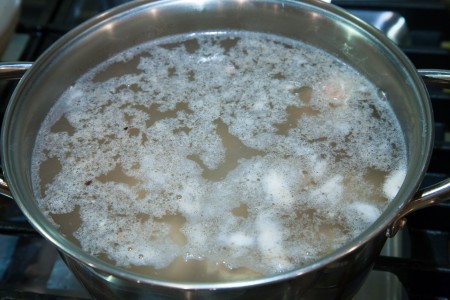

- In a large wok or pot that comes with a lid, turn the heat to medium. Add the 2 tablespoons of oil, and then add the rock sugar prices. Do not wait for the oil to turn hot before adding the rock sugar.


- Slowly stir and toss the rock sugar pieces until they all dissolve into caramel; about 5 minutes. Be patient here and watch the process closely. The sugar will first turn into a light golden color, then into an amber color. Once all the rock sugar pieces dissolve into the oil, raise the heat to medium high and immediately add the ribs. Quickly stir and toss to cover all the ribs with the caramel.








- Add enough hot water to cover all the ribs, then pour in the 60g of vinegar, 2 teaspoons of dark soy sauce, and 1 tablespoon of Chinese Shaoxing cooking wine. Mix gently then cover the lid. After the liquid starts boiling, lower the heat to low with lid closed to maintain a rolling boil and cook for up to an hour.




- After the time is up, the amount of liquid sauce in the pan should be around ¼ of the original amount. At this time, add the 1 teaspoon of salt. With lid open, raise the heat to medium-high to further thicken the liquid sauce. The ribs are ready when the sauce begins to have large numbers of bubbles. (Watch closely, it should take only a few minutes as the sauce can easily dry out)



- Transfer the ribs along with the remaining sauce to a plate. Sprinkle the 1 tablespoon of roasted white sesame seeds on top before serving.

Bon Appétit

Notes:
- Like I mentioned in the opening, you can find this type of spare or baby back rib cut in most Asian grocery stores. American stores such as Costco and H-E-B also carry this cut. At Costco, it’s called “St. Louis Pork Spare Rib Portions”, and at H-E-B, it’s called “Pork Cross Cut Spare Ribs” and “Pork Cross Cut Baby Back Ribs.”
- Rock sugar is lumps of crystallized sugar. They are sold in most Asian grocery stores. It is either yellow or white and can be big or small. You can use rocks sugar directly as a sweetener for beverages or in cooking. Rock sugar is less sweet than regular white sugar. And that’s why you can use less white sugar to achieve the same sweetness. Also in this recipe, I used a mature type of Chinese black vinegar, Shanxi Superior Mature Vinegar (山西老陈醋). If you do not have Chinese black vinegar, use 4 tablespoons of balsamic vinegar instead.
- Dark soy sauce is mainly for coloring purposes. If you do not have this type of soy sauce, you can skip it (the final color will be much lighter). Or you can substitute it with ¼ light soy sauce and ½ teaspoon molasses.



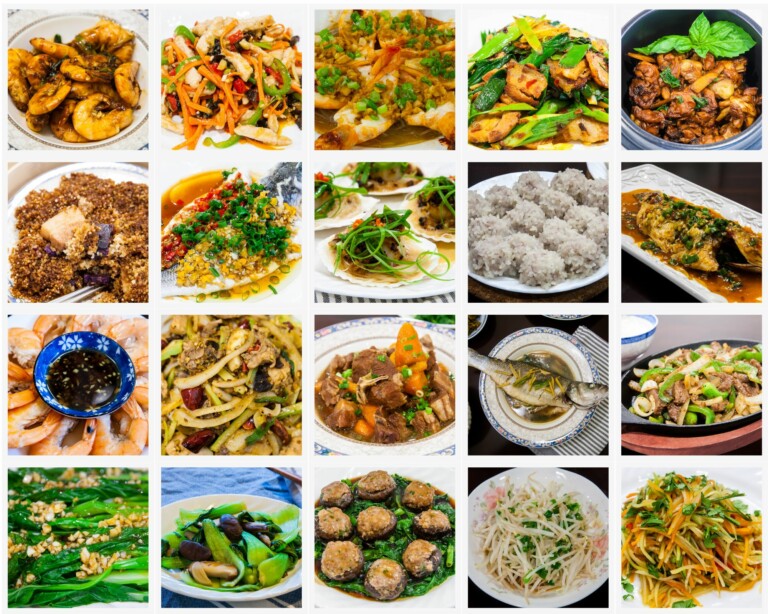

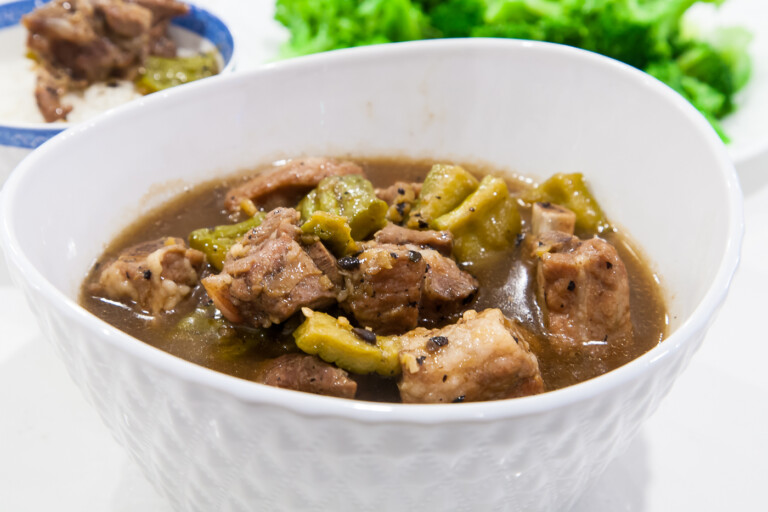















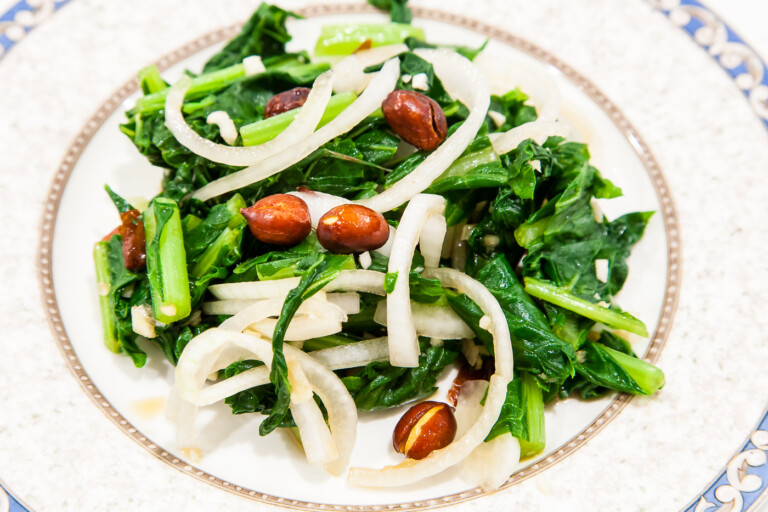

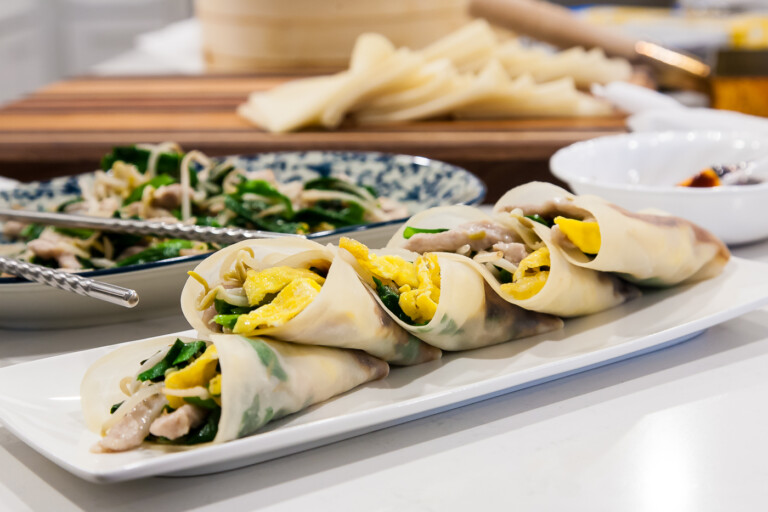



Yi wrote:
This is one of my favorite rib recipes of all time and it always makes a great party hit. The color from the caramel looks amazing, I bet it tastes great as well. Thanks for sharing!